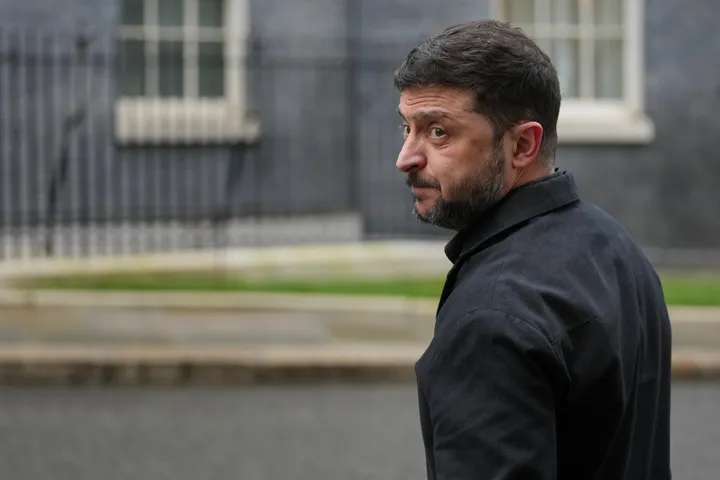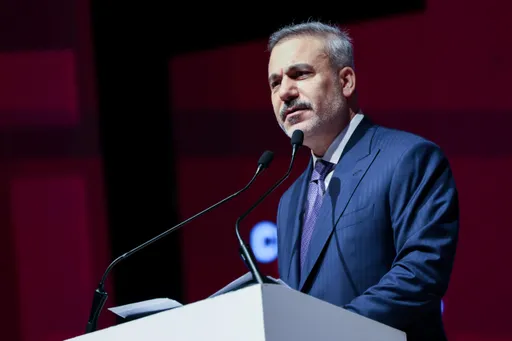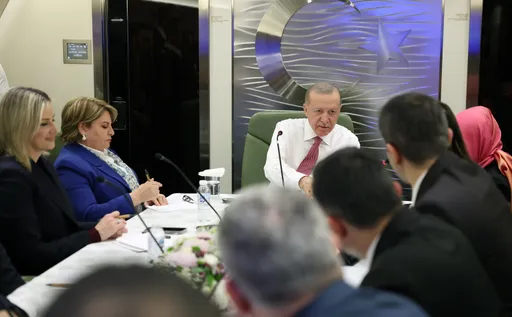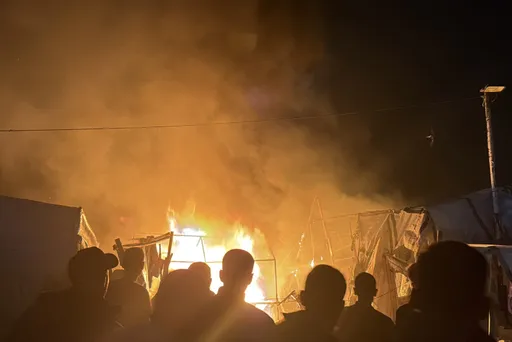This year, World Refugee Day was observed amidst a debate on how the age-old class divide continues to shape people’s perceptions of tragedies — some deaths shake humanity, while others seem to be ignored outright.
Two marine tragedies recently occurred within the same week: One incident involved five people, including three wealthy businessmen, who had set out on a submersible in the North Atlantic Ocean to explore the Titanic wreckage. The other incident involved an overcrowded fishing trawler carrying over 600 refugees from South Asia and the Middle East — each human aboard seeking to break away from poverty and violence and start a new life in Europe.
While none of the five men in the submerged submarine survived, it has been confirmed that at least 78 refugees and migrants died, with more than 500 still missing after the trawler sank off the coast of Greece.
Like every other incident of a disappeared or sunken refugee boat in the past, there was an absence of mass sympathy or public outrage following this latest incident, despite the Greek Coast Guard facing criticism for “deliberately” delaying the rescue operations and essentially allowing the refugees to drown.
On the contrary, the deaths of those aboard the Titan submersible were met with an outpouring of compassion, with almost every global media organisation devoting much of their coverage to the deadly underwater mishap.
Soon after, a commentary critical of the double standards apparent in both the media coverage and the wider response from the global community — which expressed concern and sympathy for the wealthy submarine victims while responding to the drowning of hundreds of refugees with a shrug — began to gain traction on social media, with human rights advocates and other influencers calling out the disparity between the responses and pointing out how certain lives are valued much more than others.
The debate — critical of the dominant media narratives shaped by those of a certain status and of selective races — got a major boost when former US President Obama chimed in, calling the divergence in coverage an “untenable situation.”
It’s now been almost a month since both tragedies unfolded. The world seems to have moved on, except for one or two follow-up stories featured in the media here and there.
A closer look, however, reveals an underlying factor that has largely escaped critical media examination, despite it having shaped the global discourse on refugees. And Europe has a lot to do with it.
Associate Professor Enes Bayrakli, Head of the Department of Political Science and International Relations at the Turkish German University in Istanbul, highlights what he calls Europe’s “biassed attitude” towards refugees.
“The refugee rights granted by the Geneva Convention have been ‘de facto’ suspended due to the anti-refugee discourse created in Europe,” Bayrakli tells TRT World.
“This demonstrates that Europe’s refugee discourse is not founded on political hostility against all refugees but rather on resistance based on some refugees’ identity, nationality, culture, and, most importantly, religion.”
While European countries have, in recent years, remained reluctant to accept non-European refugees, adopting harsh border policies to keep refugees away, Bayrakli says European leadership suddenly and conveniently changed overnight when the Russia-Ukraine conflict erupted, opening their borders and welcoming millions of Ukrainian refugees.
Only ‘European refugees’ allowed
In addition to launching aid campaigns, almost every European country has opened its borders exclusively to Ukrainian refugees, with many granting them legal status.
The contrast in Europe’s response to refugees arriving from non-white countries has been stark.
In the past 12 years, European countries have admitted just over 1 million Syrian refugees in comparison to the nearly 6 million Ukrainian refugees granted asylum between 2022 and 2023.
In defiance of the Refugee Convention of 1951, which guarantees refugees non-refoulment — protecting them from being returned to a country where they would face serious harm or threats — and prevents their mistreatment, European leadership has implemented a slew of measures to deny asylum to tens of thousands of people they see as ‘undesirable’ refugees.
In Europe’s case, Bayrakli says, politicians have dehumanised non-European refugees in their discourse, creating a fear of the ‘other’ and portraying non-white refugees in a bad light. Policymakers dominate such rhetoric and use hostile policies and methods to justify their treatment of refugees, Bayrakli adds.
The approach taken by politicians towards European refugees was quite different. For instance, the former prime minister of Bulgaria, Kiril Petkov, used the following words to empathise with the victims of violence in Ukraine while dehumanising Syrians: “These people (Ukrainians) are Europeans. These people are intelligent; they are educated people. This is not the refugee wave we have been used to.”
Bayrakli affirms that “The role of Frontex in the Mediterranean and Aegean demonstrates that a new iron curtain has been erected in Europe as a result of the refoulement of refugees, the sinking of boats, the rhetoric of the rising far right, and the establishment of security policies.”
EU’s ‘new iron curtain’
The standard discourse in Western media surrounding non-Western refugees often exhibits an orientalist perspective, according to human rights advocates, with non-European refugees often portrayed as the ‘other’ and being framed as a ‘burden,’ reinforcing stereotypes and positioning them in a lower status.
This rhetoric contributes to the perpetuation of hierarchical racism and biases in how these refugees are treated and perceived.
Bayrakli explains, “The higher the resistance against assimilation, the more severe the policies against it become. This is because the discourse of cultural racism comes into play, which basically means that our culture, our way of life, they say, is superior to yours.”
In addition to being victims of a discourse that promotes cultural racism, Syrian refugees have often been portrayed as a ‘burden’ — not just politically but also economically. British public broadcaster BBC once reported on Syrian refugees with the subhead “Burden sharing” and shared a comment about the Syrian refugee crisis as “the largest, most expensive aid operation of modern times.”
Such discourse is considered a form of dehumanisation as it reduces the humanitarian aspect of the refugee crisis to an economic basis.
‘Hierarchical racism’
Hierarchical racism, or prioritisation of certain refugee groups over others, is another tool commonly used in Western media and politics.
According to Bayrakli, this hierarchy of refugees is based on the perception that “one group deserves more protection and sympathy” than another.
He explains, “We see European citizens as deserving the most protection on top of the hierarchy. Eastern European countries come next. Ukrainian and Belarusian citizens, who are Christian but Eastern European, fall into this group. Lastly, we see Muslims, Easterners and Africans.”
“Although not explicitly stated most of the time, this hierarchy is reflected in policies, as seen in the case of Ukraine,” adds Bayrakli.
Notable examples illustrate this hierarchical refugee phenomenon. CBS News senior correspondent Charlie D'Agata took a discriminatory approach when reporting on refugees, commenting that Ukrainians seeking asylum in Europe were "relatively civilised, relatively European,"
This type of discourse, which pitches Ukrainian refugees as superior to other refugees, is being subtly normalised by Western media, says Bayrakli.
Deutsche Welle’s coverage of the Ukrainian refugees has been dotted with instances that support Bayrakli’s viewpoint. The German media organisation shared a comment that defined helping Ukrainian refugees as a “reflex,” a natural instinct, a response described as a “solidarity reflex.” This drives Bayrakli’s main moot point home: Do only European refugees deserve sympathy?
‘Europeans vs Others’
Another notion of “Europeans vs others” was exemplified by a remark made by an NBC reporter who, when referring to Ukrainian refugees, said: “Just to put it bluntly, these are not refugees from Syria. These are refugees from neighbouring Ukraine...These are Christians, they’re white.”
This remark implies that sympathy for Ukrainians should be natural for — and expected of — Europeans with blue eyes and blonde hair. This sentiment was literally articulated by Ukraine’s former deputy general prosecutor, David Sakvarelidze, who told the BBC, “It’s very emotional for me because I see European people with blonde hair and blue eyes being killed every day with Putin’s missiles and his helicopters and his rockets.”
Such discourse underlines the idea of Europe “being a white, predominantly Christian continent,” according to Dr Farid Hafez, a visiting professor at Williams College and senior researcher at Georgetown University, who says rhetoric like this reveals the divide between the European community and Muslim refugees.
“They want to have a representation of who they are and how Europe should look in the future and therefore problematise Muslim refugees from the Middle East in their discourse,” he said.
The dehumanisation of refugees in Europe starts with the state-sanctioned policy of refusing to give them refugee status and instead calling them ‘economic migrants,’ refusing to accept the fact that most of these people are escaping wars for legitimate reasons.
In doing so, Hafez argues, European states create flimsy grounds to deny asylum to those fleeing terrible conditions — or to simply discard them in offshore, outsourced detention facilities.
And in worst-case scenarios, refugees die in incidents like the recent tragedy in the waters of Greece.
The boat disaster has entered its third week, and European and Greek authorities have yet to answer a range of questions.
While victims have been sharing their ordeals and shedding light on some troubling aspects of the tragedy — from the Greek Coast Guard allegedly towing the trawler forcibly, causing the vessel to capsize, to Greek authorities not acting in time to save the victims aboard the sinking vessel — the incident may not have generated any debate if activists and former US president Obama had not called out the “hypocrisy” of turning all cameras towards a submersible full of affluent businessmen while turning a blind eye to hundreds of humans who perished off the Greek coast.
























